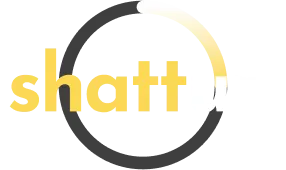Human Attention Estimation System
The goal of the Human Attention Estimation System (HAES) is to estimate the level of attention for each person in a video, detecting moment-to-moment fluctuations in overall attention levels, based on user’s appearance, physiological changes, and in environmental information. Right now, we are focused on estimating sustained attention, defined as a state of mind where the person is processing or absorbing information in a way that is almost transformative.
We believe that this type of attention is closely related to the achieved performance on a single task over time. Research has identified a number of factors that can contribute to a lack of sustained attention, including multitasking, external distractions, mind-wandering and tiredness. Our attention estimation solution processes the video and audio of the users locally, only sending processed data through the web to our servers. Here, HAES receives it and carries on the estimation of the attention level in real time.
The estimation of attention is dependent on HAES behavioural and physiological variables. Examples of these variables include head pose, eye gaze, blinking, mouth status, facial expressions, among others 38 variables. The variables are calculated from the user's video and audio data, using a combination of machine learning models and traditional computer vision methods.
Our methodologies are grounded in the latest research and have been rigorously validated by leading experts to guarantee effectiveness and reliability.
In collaboration with educational institutions, hospitals, research laboratories, and diverse populations worldwide, we strive to uncover the complexities of attention that impact perception, cognition, productivity, social interactions, and overall wellbeing. Our multidisciplinary approach merges science and technology to develop sophisticated algorithms that measure attention effectively.
About Shattup Application
We developed Shattup with reduced capabilities with respect to the complete HAES capabilities. The use cases of Shattup are those in which a user may not want to interact with Shattup actively, but they want to monitor their attention while doing any other activities in their computers. The Application can be placed in a corner of the screen while recording a session, for example. It can be also useful to show your attention in screen during a call with other people, playing a videogame, reading text, watching a video, doing cognitive tasks, etc.
Shattup captures the webcam of the user and computes the attention score, i.e., the momentary General Attention Score (mGAS) for the video frames, returning a continuous value between 0 (minimum sustained attention) and 1 (maximum sustained attention).
The target of this version of the interface is to serve as the main experience of Shattup. With this UI a user can review the history of all their sessions, the plots with bigger size, points assigned to sessions, etc. More specifically, the interface provides with the following capabilities to the user:
Visualization of the mGAS both in numerical score (the latest value that has been estimated) and as a plot that shows the mGAS vs. time. In this visualization, the colour of the numerical score changes from green to red, going through several steps depending on the values of the mGAS score. Lower values are shown in colorous more similar to red and higher values in a green palette.
Session recording: the scores computed from the video frames are recorded anonymously.
Session loading and deleting: the user can load a previously recorded session. Then, the Shattup interface will show the length of the session, the mean mGAS for the whole session, and the mGAS vs. time curve.
Session report in text and audio: when the user loads a previous session, a session report is shown summarizing the main metrics and findings of that session. Thus, they can obtain a glance of their actual performance without the need of making their own numerical analysis of the mGAS values. The Shattup interface also gives the option to reproduce the report in audio for a better accessibility.
Contact Us
Contact us with your questions and feedback;
we are here to assist you with your credit repair needs.
Keep me update about Shattup

